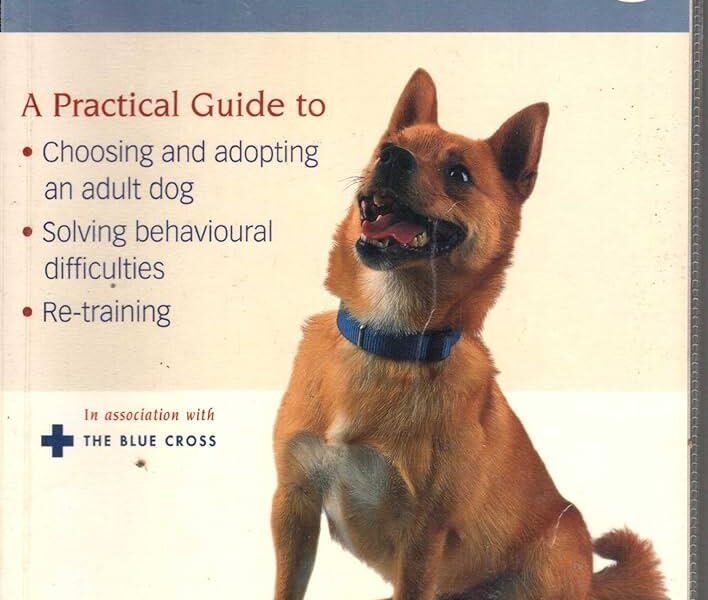Title: Unleashing Potential: The Journey of Rescue Dog Training
In a world where second chances can transform lives, the bond between humans and animals often illuminates the path to healing and companionship. Among these remarkable relationships, rescue dogs stand out, embodying resilience and hope. These four-legged companions, having faced adversity, come with unique stories etched into their hearts. Yet for them to thrive in their new homes, proper training is essential. Rescue dog training is more than just teaching commands; it’s a journey of trust, understanding, and mutual growth. This article explores the nuances of training rescue dogs, shedding light on techniques, challenges, and the profound rewards that await both the trainer and the pup. Whether you are an experienced owner or considering bringing a rescue dog into your life, joining this exploration can foster a nurturing environment where every wagging tail tells a story of transformation.
Table of Contents
- Understanding the Unique Challenges of Training Rescue Dogs
- Building Trust: The Foundation of Successful Rescue Dog Training
- Effective Techniques for Behavioral Issues in Rescue Dogs
- Creating a Positive Environment for Lifelong Learning and Bonding
- Q&A
- Key Takeaways
Understanding the Unique Challenges of Training Rescue Dogs
Training rescue dogs comes with a distinct set of challenges that can differ greatly from those faced when training puppies or well-bred dogs. Many of these dogs have faced trauma, neglect, or abandonment, which can result in behavioral issues such as anxiety, fear, and difficulty trusting humans. Understanding their past is crucial, as it allows trainers to tailor their approaches to each dog’s unique needs. This often involves employing positive reinforcement techniques and being patient through the training process. Key factors to consider include:
- Trauma Responses: Recognizing signs of stress or fear can help trainers adjust their methods accordingly.
- Socialization: Gradually introducing rescue dogs to new environments and interactions can build their confidence.
- Establishing Routine: Consistent schedules help provide a sense of security for these animals.
Moreover, communication is vital in rescuing and nurturing these dogs. While traditional commands may work well for some dogs, rescue dogs may require the incorporation of more nuanced cues and body language. Establishing a bond through trust and mutual understanding can lead to successful training outcomes. Below is a simple overview of the potential training approaches:
| Training Approach | Description |
|---|---|
| Positive Reinforcement | This method rewards good behavior with treats or praise to encourage repetition. |
| Behavior Modification | Focuses on changing undesirable behaviors through consistent techniques and supports. |
| Desensitization | Gradually exposes the dog to fear-inducing stimuli to reduce sensitivity. |
Building Trust: The Foundation of Successful Rescue Dog Training
Establishing a strong bond with a rescue dog requires patience and understanding, as many of these dogs come with a history that can affect their behavior. To foster this critical trust, it’s essential to create a safe environment where your new companion can express themselves without fear. Start by developing a routine that includes regular feeding times, exercise, and play. Consistency helps to build predictability, making your dog feel more secure in their new surroundings. Additionally, utilizing positive reinforcement methods, such as treats and praise, can strengthen the relationship you are building. Always celebrate small wins, as this will encourage your dog to engage with you instead of retreating into their shell.
Moreover, it’s crucial to recognize and respect your rescue dog’s boundaries. Every dog is unique, and some may take longer than others to build trust. Pay close attention to their body language, as it can be an insightful way to gauge their comfort level. When introducing new experiences or people, do so gradually, allowing your dog to approach at their own pace. Here are some key elements to consider for nurturing trust:
- Patience: Take your time and don’t rush the process.
- Communication: Use a calm tone and clear signals.
- Security: Provide a safe space where they can retreat when overwhelmed.
- Engagement: Use interactive toys and activities to create positive associations.
Trust cannot be built overnight; it is a gradual journey that can lead to a remarkable transformation in both the dog and the owner. Here’s a simple overview of tips and techniques to enhance your training sessions:
| Technique | Description |
|---|---|
| Desensitization | Introducing new sounds or environments slowly. |
| Counter-conditioning | Changing negative associations to positive experiences. |
| Socialization | Encouraging positive interactions with other dogs and people. |
Effective Techniques for Behavioral Issues in Rescue Dogs
Addressing behavioral issues in rescue dogs requires a blend of patience, understanding, and effective techniques. First, it’s crucial to establish a safe and stable environment. Consistency in routine helps the dog feel secure and reduces anxiety. Implementing basic commands can aid in building trust and communication. Consider the following strategies:
- Positive Reinforcement: Reward good behavior with treats, praise, or playtime to encourage repetition.
- Socialization: Gradually introduce the dog to new people, pets, and environments to reduce fear and anxiety.
- Desensitization: Slowly expose the dog to specific triggers—in a controlled manner—to minimize overreactions.
Moreover, it’s essential to recognize when professional help is needed. Engaging with a certified dog trainer or behaviorist can provide tailored strategies suited to your dog’s specific challenges. Keeping track of progress will ensure that methods remain effective and allow for adjustments in the training plan. Here’s a simple table outlining some common behavioral issues and suggested techniques:
| Behavioral Issue | Recommended Technique |
|---|---|
| Excessive Barking | Identify triggers and practice the ”quiet” command. |
| Separation Anxiety | Gradual desensitization to alone time. |
| Jumping on People | Teach a sit command to redirect excitement. |
Creating a Positive Environment for Lifelong Learning and Bonding
Creating an atmosphere where both humans and rescue dogs can thrive fosters not only effective training but also deepened relationships. To establish this positive environment, consider implementing the following strategies:
- Consistency: Reinforce commands and routines to build trust.
- Patience: Allow time for learning; celebrate small victories.
- Positive Reinforcement: Use treats and praise to motivate and encourage.
- Socialization: Expose dogs to various environments, people, and other pets.
Incorporating these elements can create a safe learning space. Additionally, utilizing teamwork can enhance the bonding experience. Setting up activities that involve both training and play can bridge the gap between learning and enjoyment. For instance, a simple training schedule might look like this:
| Day | Activity | Duration |
|---|---|---|
| Monday | Basic Commands | 30 minutes |
| Wednesday | Socialization Walks | 45 minutes |
| Friday | Fun Tricks | 30 minutes |
By embracing these habits and approaches, both trainers and their furry companions can enjoy a rewarding journey filled with learning and connection.
Q&A
Q&A: Understanding Rescue Dog Training
Q1: What is rescue dog training, and why is it important?
A1: Rescue dog training is a specialized approach to training dogs that have been adopted from shelters or rescues. These dogs often come from challenging backgrounds and may have behavioral issues stemming from trauma, neglect, or a lack of socialization. The training focuses on building trust, enhancing social skills, and helping the dogs adapt to their new environments, making it crucial for fostering a successful and harmonious relationship between the dog and its new owner.
Q2: What are some common challenges faced when training rescue dogs?
A2: Training rescue dogs can come with a unique set of challenges, including fearfulness, anxiety, and a lack of basic obedience skills. Many rescue dogs may have had little to no positive interactions with humans, leading to behaviors such as cowering, barking, or aggression. Each dog is different; understanding their specific fears and triggers is essential for effective training.
Q3: What techniques are most effective for training rescue dogs?
A3: Positive reinforcement is the cornerstone of effective training for rescue dogs. This method involves rewarding desired behaviors with treats, praise, or play, encouraging the dog to associate good behavior with positive outcomes. Building a routine and using patience and consistency also help. Slow acclimatization to new environments and experiences can ease a rescue dog’s anxiety and foster confidence.
Q4: How can adopters help their new rescue dog adjust during the training process?
A4: Adopters can help their new rescue dog adjust by providing a safe and calm environment. Establishing a consistent daily routine with set times for feeding, walks, and training sessions can help the dog feel secure. It’s important for adopters to read their dog’s body language to understand their comfort levels and to go at their own pace, ensuring the training is a positive experience.
Q5: Are there specific training programs or resources recommended for rescue dogs?
A5: Many shelters and rescue organizations offer training programs tailored specifically for rescue dogs. Additionally, professional dog trainers with experience in behavior modification can provide invaluable assistance. Online resources, books, and community workshops focused on canine behavior can also be helpful. Look for materials that emphasize positive reinforcement and compassionate techniques.
Q6: Can rescue dogs learn the same skills as dogs raised in homes from puppyhood?
A6: Absolutely! While training a rescue dog may require more time and patience, they are capable of learning just as much as any dog. With consistent training and love, rescue dogs can master basic obedience commands and even advanced skills. Many rescue dogs go on to excel in agility, therapy work, and other specialized training as they overcome their past experiences.
Q7: How long does it typically take to train a rescue dog?
A7: The timeline for training a rescue dog varies widely, depending on the individual dog’s background, age, and specific issues. Some dogs may show significant improvements within weeks, while others may require months of training. Patience is key, and celebrating small victories along the way helps maintain motivation for both the owner and the dog.
Q8: What should an owner do if they feel overwhelmed during the training process?
A8: Feeling overwhelmed is completely normal, as training a rescue dog can be a complex journey. It’s important to take breaks and seek support. Connecting with fellow dog owners or joining local support groups can provide encouragement. Consulting a professional trainer who specializes in rescue dog behavior can also offer guidance and strategies to help regain confidence in the training process.
Q9: How can successful rescue dog training impact the community?
A9: Successful rescue dog training not only transforms the lives of individual dogs and their adopters but also fosters a sense of community. As more families engage in training and adopting, it raises awareness about the importance of shelter dogs, encourages responsible pet ownership, and promotes kindness towards animals in need. With each trained rescue dog, we stitch a tighter fabric of compassion in our neighborhoods.
By understanding the nuances of rescue dog training, both adopters and their furry companions can embark on a rewarding journey together, creating lasting bonds that enrich their lives.
Key Takeaways
As we wrap up our exploration of rescue dog training, it’s clear that the journey is as rewarding as it is challenging. Each wagging tail tells a story of resilience, and every successful command echoes the bond forged between handler and dog. While the path may be paved with hurdles, it’s also illuminated by milestones of trust, understanding, and love.
Embracing the art of training a rescue dog not only transforms the life of the animal but enriches our own in immeasurable ways. As you embark on this hopeful endeavor, remember that patience and perseverance are your greatest allies. Every step taken is a step toward a brighter future for both you and your furry companion.
So, gather your treats, harness your enthusiasm, and prepare for a journey filled with learning and joy. After all, every rescue dog deserves a second chance, and with your guidance, that chance can flourish into a beautiful partnership. Happy training!



